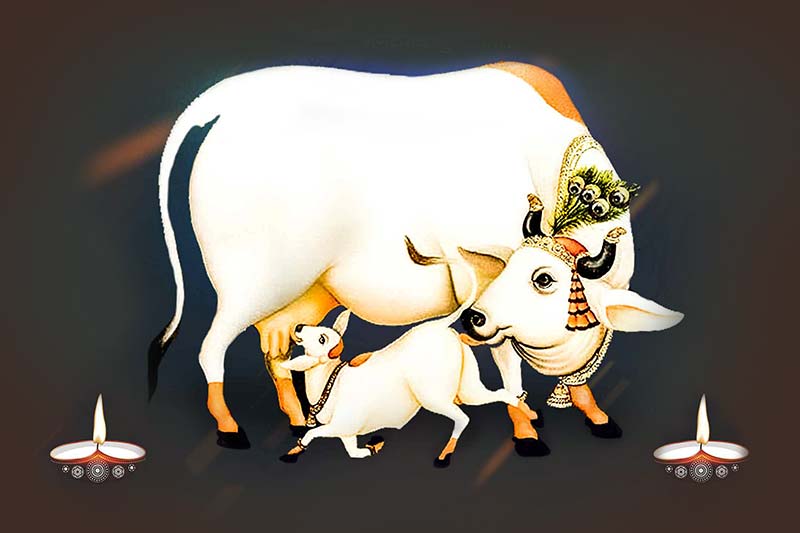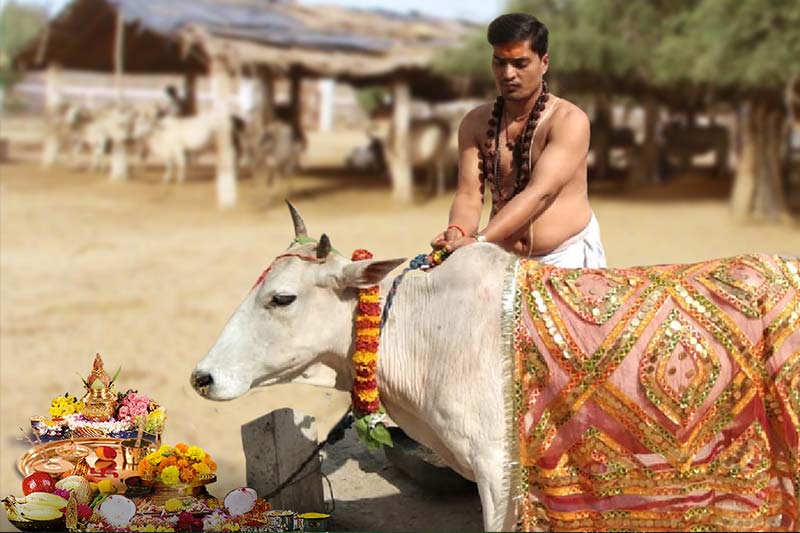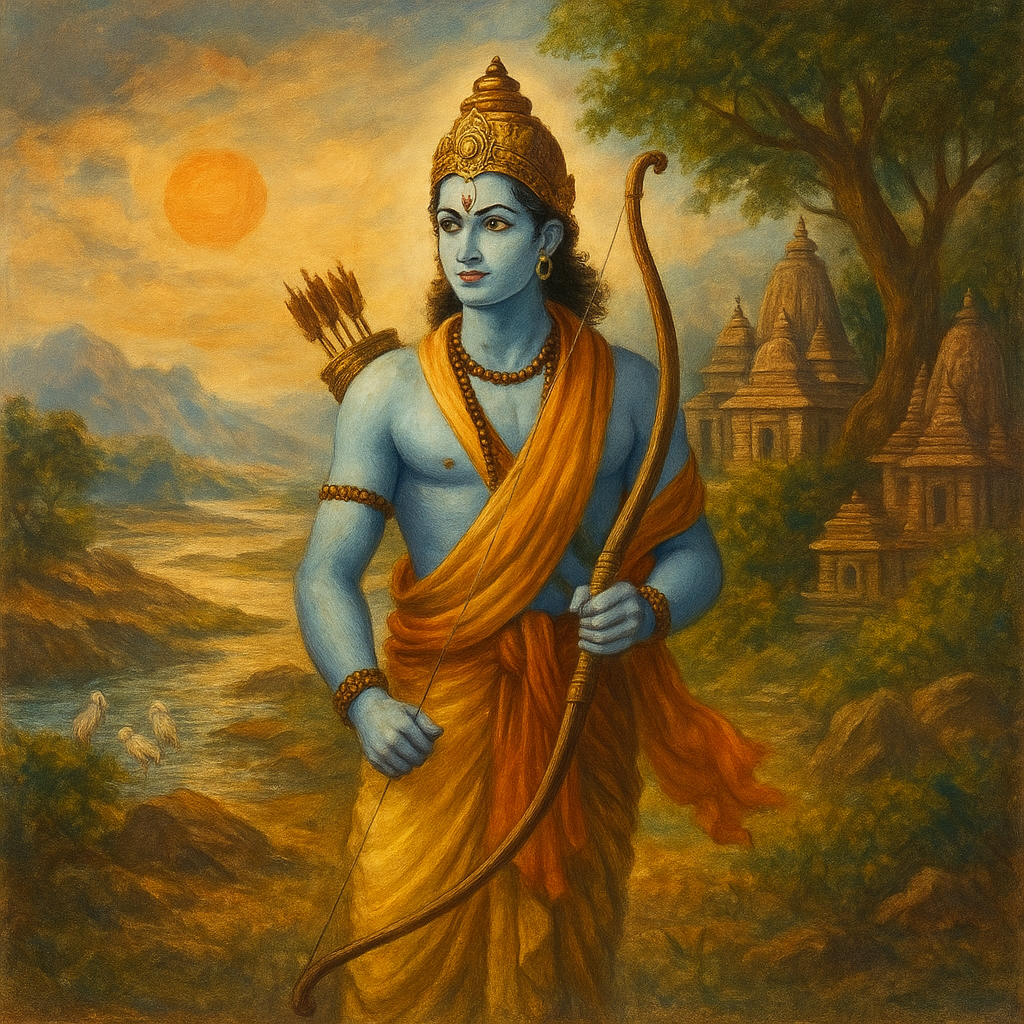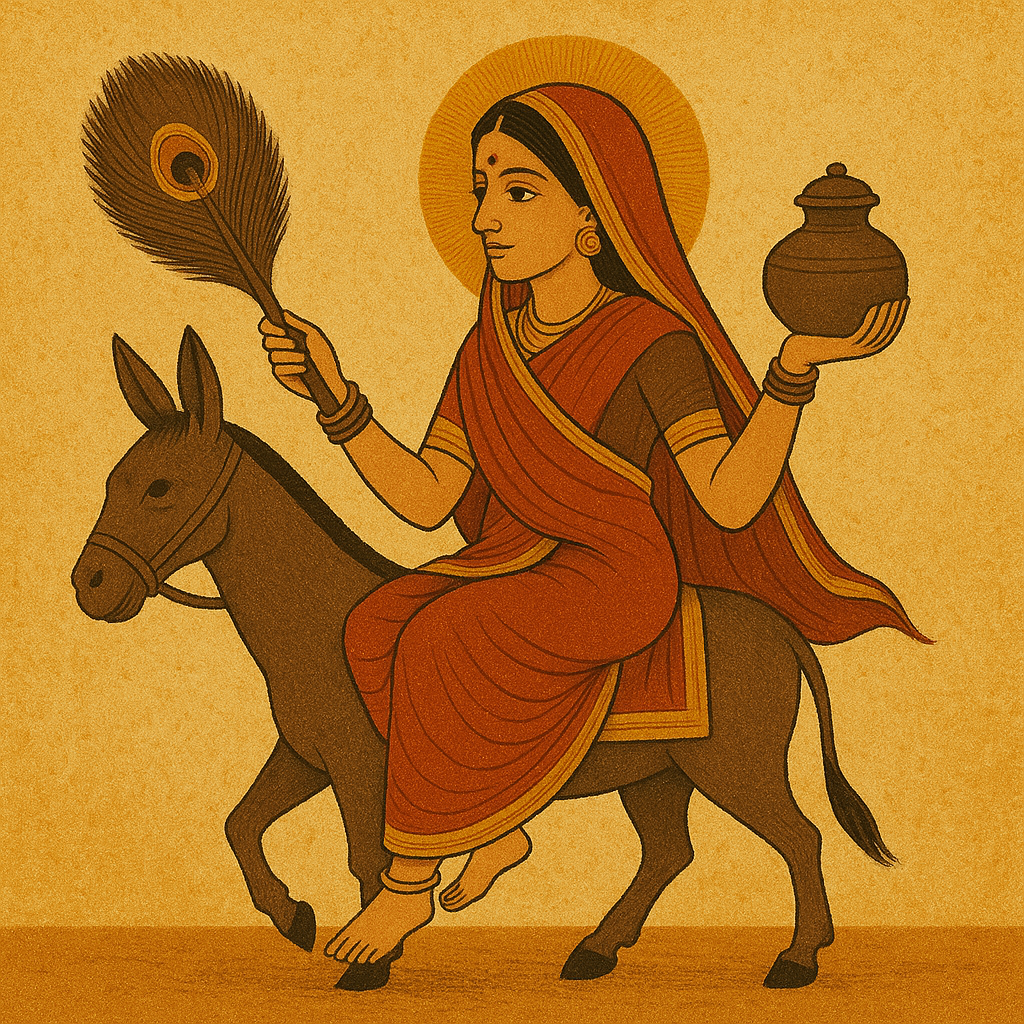Govatsa Dwadashi is a Hindu cultural and religious festival that marks the beginning of Diwali celebrations in some regions of India, particularly Maharashtra, where it is known as Vasu Baras . It is known as Vagh Baras in Gujarat and Sripada Vallabha Aradhana Utsav of Sripada Sri Vallabha in Andhra Pradesh's Pithapuram Datta Mahasamsthan. In Hinduism, cows are considered very sacrosanct, equivalent to human mothers for supplying people with nourishing milk. On the day of Govatsa Dwadashi, the festive fervor of the 'Festival Of Lights' begins with the celebration and worship of cows, bulls, and oxen. Cows have been long held to bring happiness and prosperity to the entire family.
When is Govatsa Dwadashi celebrated in 2026?

Govatsa Dwadashi takes place one day before to the 'Dhanteras' festival on the 'Dwadashi' (12th day) of the 'Krishna Paksha' (waxing phase of the moon) during the 'Ashwin' month of the Hindu calendar. This date comes about between the months of October and November in the Gregorian calendar.
Govatsa Dwadashi on
Thursday, November 5, 2026
Pradoshkala Govatsa Dwadashi Muhurat - 05:33 PM to 08:10 PM
Duration - 02 Hours 37 Mins
Dwadashi Tithi Begins - 10:35 AM on Nov 05, 2026
Dwadashi Tithi Ends - 10:30 AM on Nov 06, 2026
Significance of Govatsa Dwadashi

In Hindu mythology, cows are regarded as manifestations of the divine and are highly revered. Since they provide nutrition for the human race, they are even revered as sacred mothers. Women fast on Govatsa Dwadashi in order for their children to live a long life. According to popular belief, if a childless couple performs the Govatsa Dwadashi puja and fasts, they will be blessed with a child.
According to the Rigveda, cows are associated with wealth, prosperity, happiness, good health, and good luck. Govatsa Dwadashi, also known as Nandini Vrat, is a sacred thanksgiving festival dedicated to the worship of cows which is a symbolic gesture of abundance, love and gratitude. ‘Go' means 'cow' while 'Vatsa' means a calf. Bhagawan Krishna, the deity incarnated as a cowherd is the
‘Protector of Cows’.
The word ‘Vagh’ means repaying financial debts, hence it is also believed that Lakshmi Mata is pleased by the worship of cows on this day. Hence, on this day devotees receive also the blessings of Bhagawan Krishna and Lakshmi Devi.
As per the Bhavishya Purana, when a devotee observes fast on Dwadashi tithi, he or she shall be absolved off all their sins. Cows are worshipped as the earthly embodiment of divine Kamdhenu who has the power to fulfil all desires. On Govatsa Dwadashi, there is emission of Chaitanya filled frequencies of Bhagawan Vishnu. A person worshipping a cow derives the benefits of these nurturing frequencies.
People worship cows on this day to please the divine Kamdhenu and seek her divine blessings since she represents the celestial deities and is associated with the blessings of motherhood, fertility, divinity, abundance and sustenance. Businessmen clear their accounts and refrain from making any transactions on this day. A person who worships cows on Govatsa Dwadashi will be blessed with abundance and a long life.
About Kamdhenu Devi

Kamdhenu also referred to as the divine mother of all cows and symbolises dharma. She is depicted as a sacred cow and her name, Kamdhenu, means
'from whom all that is desired is drawn'—'the cow of plenty.”
She has long been held as the divine cow with the power to grant all desires and wishes. Kamadhenu devi, a symbol of prosperity and abundance, is worshipped throughout India.
She is known to exist in five different forms: Nanda, Sunanda, Surbhi, Sumana and Susheela. She is also known as Sabala and Matrika. She is associated with the five elements: earth, water, fire, air and ether. The four legs of Kamdhenu symbolize the four texts of the Vedas, while the four teats are the four Purusharthas. The horns symbolize the Gods while its face represents the sun and the moon. The shoulders are a symbol of Agni Dev.
Kamdhenu devi is said to be capable of granting wishes, nourishing her devotees, and bestowing blessings. She has also been linked to the goddess Aditi and is known as the nurturing mother of all deities.
Legends of Kamdhenu Devi

According to a legend, Kamdhenu emerged from Kshira Sagar during Samudra Manthan. The Devas decided to give Kamdhenu to the Saptarishis, the seven great sages. According to another legend, during Samudra Manthan, five wish-fulfilling cows (kamdhenus) emerged. Among the five wish-fulfilling cows, a divine cow known as Nanda emerged. Nandini is the daughter of Kamdhenu.
As per the Anushasana Parva, Kamdhenu was the daughter of King Daksha. She came to life after the king consumed the nectar of immortality which emerged from the churning of the oceans. According to the Matsya Purana, Kamdhenu is a consort of Bhagawan Brahma and mother of Yogishwari, the eleven Rudras, the goats and swans.
According to the Devi Bhagvata Purana, once Bhagawan Krishna and Radha devi were thirsty. The Bhagawan created Kamdhenu and milked it. It is believed that thousands of cows emerged from Kamdhenu to serve the Gopis.
The ancient scriptures depict Bhagawan Dattatreya as a monk holding Kamdhenu in one hand. Kamdhenu is believed to be the guardian of Brahmin sages and represents both spiritual and material wealth. She protected the sage Vashishtha from the ire of the kings and produced warriors. Kamdhenu is said to have ruled over Goloka, the celestial body of Lord Krishna, according to the Mahabharata.
Cow dung is considered holy according to Anusasana Parva of the Mahabharata because it is believed to house Lakshmi devi. Lakshmi once saw thousands of cows grazing on a meadow. She offered them a prosperous boon. Cow dung has been revered ever since.
Vasu Baras Puja Vidhi

Early in the morning, devotees hear devotional bhajans. Homes, streets, and gaushalas are adorned with earthen lamps and flowers. The air is filled with mystical piety that is enlivened by the aroma of sweets, flowers, and incense.
- On Govatsa Dwadashi, cows are worshipped. After they have been bathed, turmeric, vermillion and sandalwood paste are applied to their foreheads.
- The cows and their calves are then lavishly dressed in bright clothes, beautiful ornaments and flower garlands.
- Two incense sticks and a lamp is lit. Holy sacrament is offered and circumambulation is done around the cows. A garland of flowers and tulsi leaves are offered while chanting mantras
- The cows are given various offerings such as consecrated rice, gram and sprouted moong. Prasad is regarded as an earthly manifestation of Nandini.
- Devotees also worship Shri Krishna, an incarnation of Bhagawan Vishnu who is grateful to and loves cows.
- On this day, women fast for the sake of their children's health. They are not allowed to eat or drink anything during the day and can only eat once.
- The Nandini Vrat observer should avoid physical activity and stay awake all night. If a person needs to sleep, he should do so on the floor rather than on the bed.
- On the day of Govats Dwadashi, some people refrain from drinking cow's milk and eating curd and ghee.
- Arghya is offered and the puja is concluded.
Govatsa Dwadashi Rituals

If a cow cannot be found, devotees make idols of cows and calves from clay and decorated with turmeric and kumkum. Devotees visit gaushalas and feed grass, sprouted moong and wheat to the cattle on Govatsa Dwadashi.
In the evening, aarti is performed. Women observe a fast on this day for the well-being of their children. The observer of Nandini vrat should remain awake throughout the night. Married women undertake a fast and consume only one meal a day.
Devotees should abstain from consuming cow’s milk, curd and ghee on this day. Replicas of cows created from mud are also worshipped on this day. Couples desiring for a male progeny should perform special pujas on Govatsa Dwadashi.
Legend of Vasu Baras
Govatsa Dwadashi was first observed by King Uttanapada, son of Svayambhuva Manu and his wife Suniti. They were blessed with a son named Dhruva upon observing Govatsa Dwadashi fast. Dhruv is the grandson of Svayambhu Manu and great grandson of Bhagawan Brahma. Svayambhu Manu, son of Bhagawan Brahma had three daughters and two sons; Priyavarta and Uttanapada. Dhruv was an ardent devotee of Bhagawan Vishnu. As a child, he was disappointed since he was not getting his father’s love and attention. He fasted for many days and performed severe penance. Pleased by his devotion, Bhagawan Vishnu appeared before him and granted him a boon of being the Dhruv Nakshatra, the main anchor and sustainer of the stars and planets.
Conclusion
During the festival of Vasu Baras, the cow is venerated as the supreme deity who bestows innumerable blessings. On Govatsa Dwadashi, if she is worshipped, revered, and cherished, she has the ability to grant the owner's every wish and desire.


-in-Astrology.jpg)






.jpg)




Comments 0
Leave your thought here